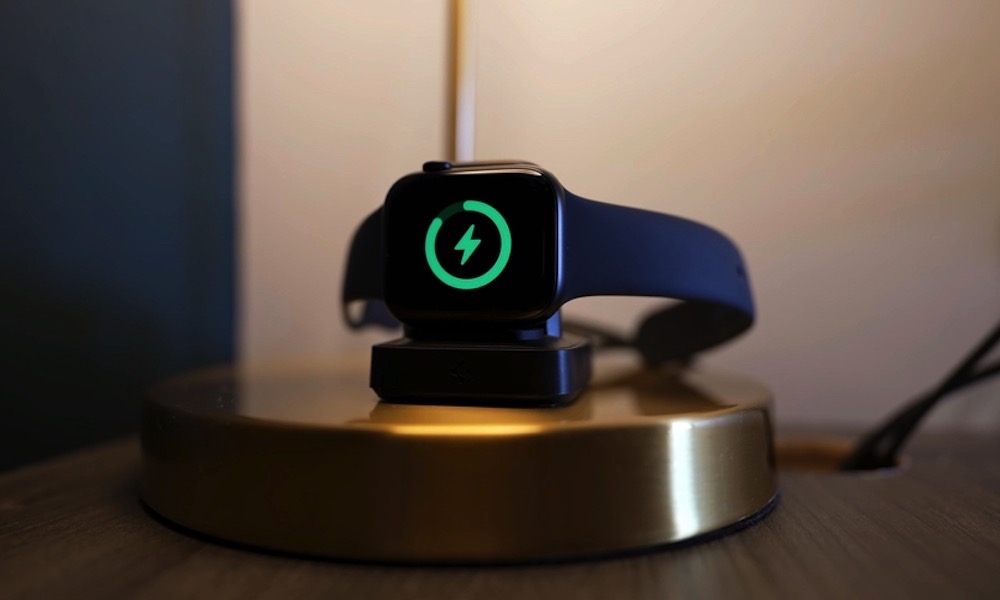Updating to watchOS 9 Will ‘Recalibrate’ Maximum Battery Capacity on Older Apple Watches | What Does It Mean?
 Credit: Jesse Hollington
Credit: Jesse Hollington
Toggle Dark Mode
This week Apple released a series of second developer betas for its major iOS updates. While watchOS 9 beta 2 isn’t quite as exciting as its iOS 16 counterpart, it introduces a small tweak that should interest users of older Apple Watch models.
This year, watchOS 9 dropped support for the Apple Watch Series 3 — a move that’s been long overdue. However, the new Apple Watch software update will still be available for owners of the 2018 Series 4 and 2019 Series 5 models, and it looks like Apple is giving these two some special attention.
Tucked away in the release notes for the second beta of watchOS 9, Apple indicates that watchOS 9 will recalibrate the battery sensors to get a more accurate estimation of the maximum battery capacity.
After updating to watchOS 9, your Apple Watch Series 4 or Series 5 will recalibrate and then estimate its maximum battery capacity more accurately.
It’s not the first time Apple has done this for an older device. Last year, iOS 14.5 did the same for iPhone 11 users, and it’s possible it’s done this more quietly for other devices in the past. However, unlike the iPhone, the watchOS has no battery health section, so you won’t get any indication that this is happening — or when it’s finished.
What Battery Recalibration Means
Managing power on modern electronic devices is more complicated than many realize. The lithium-ion batteries that Apple uses in everything from an Apple Watch to a MacBook Pro have specific chemical characteristics, meaning they must be charged and discharged in particular ways.
For one thing, you can’t just run an Apple Watch until the battery truly goes dead. A lithium-ion battery that is truly dead — that is, contains no power at all — will be impossible to recharge. Hence, power management circuitry in an Apple Watch has to recognize when the battery is reaching that critically low point and power down the Apple Watch before it risks draining the battery completely.
Similarly, it’s unhealthy for these batteries to be kept at peak capacity, and a very bad idea to overcharge them. As a result, engineers incorporate a safety margin between the maximum battery level and the 100% mark where your device stops charging.
Charging too rapidly by applying too much current when a lithium-ion battery is closer to full capacity can also dramatically shorten the battery’s life. That’s why even Apple’s fastest wired chargers slow down charging speeds when the battery reaches 50 percent and then reduce them even further when it hits 80 percent.
Since these battery thresholds are so critically important to preserving battery health, it’s understandably crucial that watchOS has an accurate measurement of how the percentages correspond to the battery’s actual voltage levels.
For example, watchOS will shut down the Apple Watch when the battery meter reaches zero percent, even if the battery is still at 20 percent or more of its capacity. A false reading on the top end could likewise cause the Apple Watch to stop charging prematurely, leaving users with poor battery life. Put simply, what watchOS sees as 100 percent might only be 80 percent of the battery’s actual capacity.
As Apple explains, maximum battery capacity relies on a complex set of algorithms and measurements taken while using your device. Since battery health naturally deteriorates on older devices — that’s just the laws of physics at work — Apple needs to update these algorithms to get a better estimate of maximum battery capacity.
In practical terms, this will likely extend the battery life for owners of these older Apple Watch models. However, users probably won’t see any improvements during the watchOS beta cycle. Battery life is traditionally worse on betas as things aren’t fully optimized, and extra diagnostic processes consume more power in the background.
However, when watchOS 9 is released this fall, the additional battery calibration should improve things for folks still sporting an Apple Watch Series 4 or Series 5.








